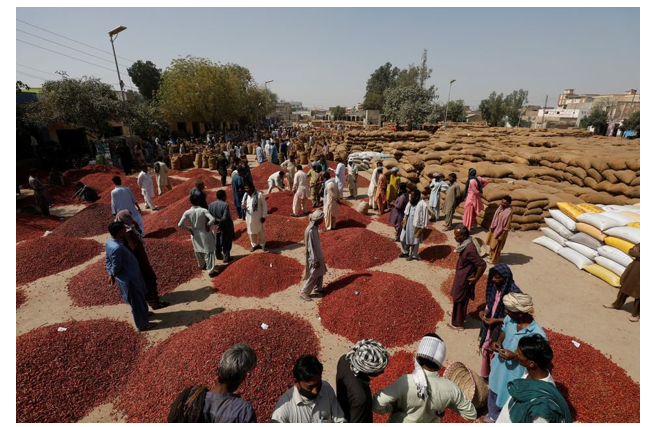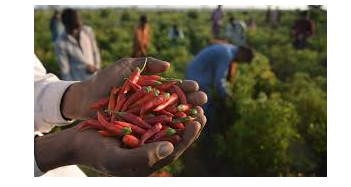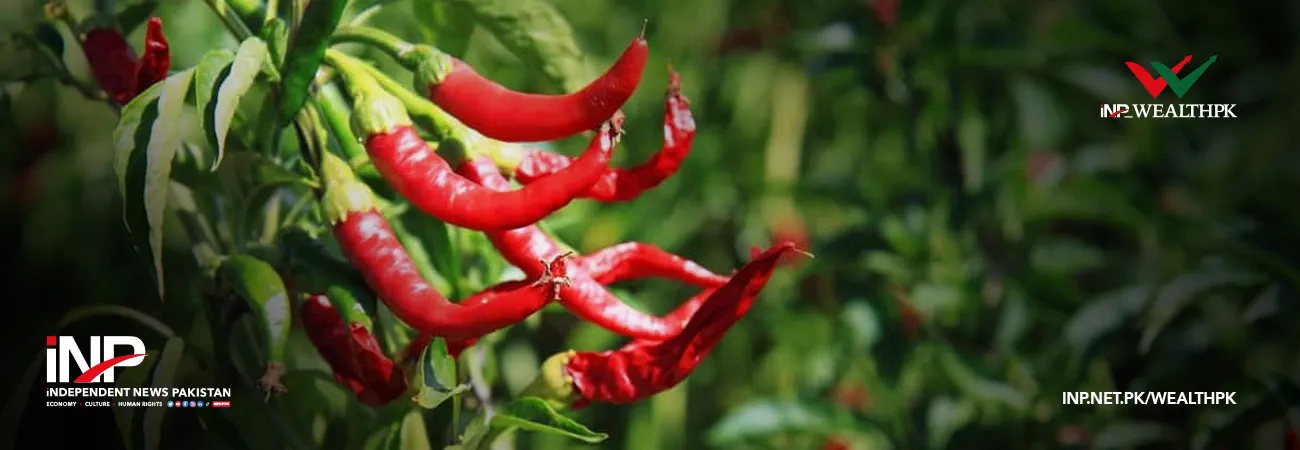INP-WealthPk
Ahmed Khan Malik
The fresh crop of red chilli has started arriving in the Kunri area of Sindh, the biggest chilli market in Asia, with the growers receiving good prices for their produce.

“However, the field to market arrivals are a little late because of rains in the production area in August and September,” Jamal Nazamani, a leading grower in Kunri, told WealthPK. He said that growers had started getting good prices for their produce initially, and hopefully, they would be getting higher rates in the days ahead. “The growers are happy at the crop yield and the value it is giving, especially after suffering losses in the last two years when floods devastated their crops,” he said.

Around 150,000 acres (60,700 hectares) of farms in Pakistan produce 143,000 tonnes of chilli annually, making the country the fourth largest chilli producer worldwide. Three districts in Sindh – Badin, Mirpurkhas and Umerkot – represent the national clusters of red chillies production. Farmers in Kunri, a tehsil of Umerkot district, mainly cultivate chillies, which are supplied to national and international markets, while farmers in adjacent districts grow chilli along with other crops like cotton, sugarcane and banana. The climate of Umerkot is suited for the cultivation of chillies. Umerkot is the tail area of all the canals and mostly soil of the district is sandy loam to clay. Chilli picking season begins from July every year, but this year, it started from September because of late sowing. Growers said that the apathy of the government towards the agriculture sector and defective export policies didn’t get them better prices for their yields. The incomplete, unreliable, untimely and often scattered data about a crop’s area, yield and production have been a limiting factor in documenting and, subsequently, improving chilli productivity.
“This results in losses at various levels as farmers are forced to sell their crop at prices based on speculation to larger players such as processors, exporters, and traders who do not have access to reliable data about crop size and other crop attributes,” Nusrat Jamali, another chilli grower, said. “This uncertainty about the size of a year’s crop and the resulting rise or fall in the market price can be managed with reliable data,” he said. “Growers mostly use traditional methods for chilli production. And the use of modern techniques will certainly help them meet the phytosanitary and food safety requirements of importing countries by addressing the issues of aflatoxin and pesticide residues,” observed Dr Mubarik Ahmed, a consultant on agriculture and food at the Trade Development Authority of Pakistan. He added that contamination by aflatoxin — a toxic byproduct of a mold that tends to spread in drought-stressed crops during production, harvest, storage or processing — had also hit chilli crops in Sindh. He said TDAP was planning to help local chilli farmers in developing more drying units.
Credit: INP-WealthPk













